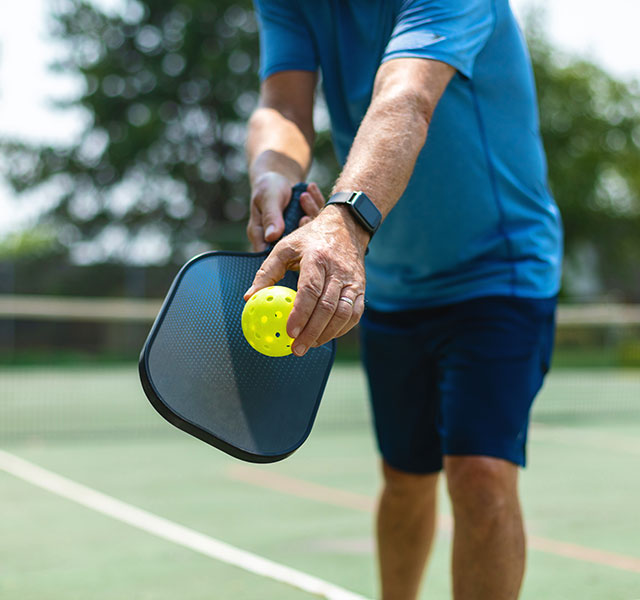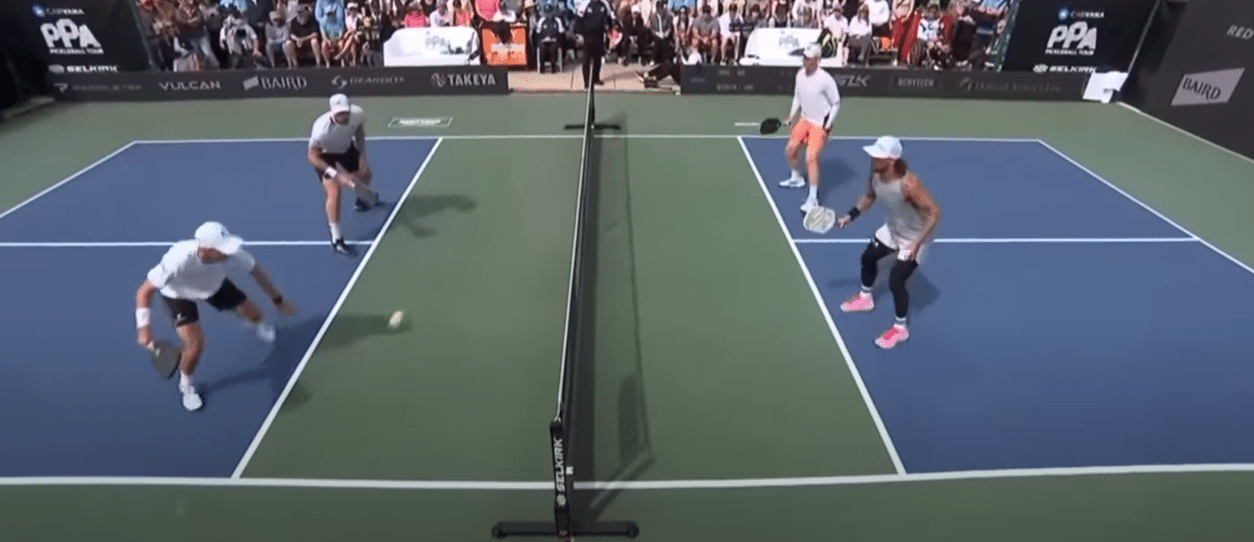From Planning to Play: How to Construct a Backyard Pickleball Court That Impresses
From Planning to Play: How to Construct a Backyard Pickleball Court That Impresses
Blog Article
Exploring the Numerous Choices for Backyard Pickleball Courts: A Home owner's Guide to Installment and Upkeep
As the appeal of pickleball remains to climb, many home owners are considering the setup of a specialized court in their backyards. This task needs careful evaluation of different aspects, such as the available area, appropriate surface area products, and continuous maintenance requirements. Comprehending these components is essential for developing a functional and pleasurable having fun environment. The journey from perception to execution can be complicated, triggering the demand for a detailed overview that deals with both setup and maintenance strategies. What are the very best methods to ensure your court remains beautiful and practical over time?
Evaluating Your Space
When considering the addition of a pickleball court to your backyard, how can you effectively evaluate the offered space? The initial step is to measure the dimensions of your yard, making sure that you have enough area for a regulation-sized court, which determines 20 feet by 44 feet for increases play (backyard pickleball court). It's necessary to make up extra space bordering the court to assist in movement and improve gameplay, commonly recommending an additional 10 feet on each side
Next, examine the terrain of your backyard. A level surface is excellent for a pickleball court, as uneven ground can bring about security threats and impact gameplay. If your lawn inclines or has blockages such as trees or landscape design attributes, take into consideration exactly how these components will certainly influence your court's area and use.
Deciding On Court Surfaces
Picking the ideal surface area for your yard pickleball court is crucial for enhancing performance and gamer safety and security. The option of court surface not just influences gameplay but additionally impacts the durability and maintenance of the court.
Asphalt and concrete provide a hard, sturdy surface area that can tear and hold up against the wear of regular play. To alleviate this, many house owners decide for cushioned surfaces or specialized coatings that supply some degree of shock absorption.
Conversely, modular sports floor tiles are a progressively prominent choice. These ceramic tiles are created specifically for pickleball and deal excellent traction, water drainage, and shock absorption. They can also be installed over existing surfaces, making them a versatile option for several backyards.
When picking a surface area, take into consideration aspects such as climate, spending plan, and intended level of play. A well-chosen court surface area will improve your playing experience while guaranteeing safety and security and long life for your backyard pickleball court. Making an educated decision is crucial for maximizing pleasure and performance.
Setup Process Review
Installing a backyard pickleball court typically involves a number of essential steps that make sure both capability and longevity. The primary step is to choose an ideal place in your yard, thinking about aspects such as sunshine, water drainage, and distance to your home. When the website is picked, clear the location of any kind of plant life, rocks, or debris to produce a degree foundation.
Next, describe the dimensions of the court, which must be 20 feet vast by 44 feet long for a basic pickleball court (backyard pickleball court). After marking the boundaries, additional info excavate the area to a depth of about 4 to 6 inches, guaranteeing proper water drainage. This excavation will allow for a secure sub-base
Following this, set up a base layer of gravel or crushed stone to advertise drainage and stability. Small this layer thoroughly prior to continuing. After the base is established, you can put a concrete piece or mount your selected court surface area products, guaranteeing they follow the dimensions.
Upkeep Tips and Methods
To make certain the durability and performance of your yard pickleball court, routine maintenance is necessary. Start by routinely examining the surface area for fractures, particles, and any type of indicators of wear. Promptly attend to any issues to prevent more wear and tear. Make use of a mop or fallen leave blower to keep the court clean, eliminating leaves, dirt, and other debris that can impact gameplay.

Furthermore, monitor your court's drainage to prevent water merging, which can lead to surface damages with time. Make certain that the bordering landscape routes water away from my link the court. If your court is made of asphalt or concrete, consider sealing the surface area every few years to boost durability.
Finally, develop a routine timetable for upkeep tasks, consisting of seasonal checks and repair services, to maintain your court in optimum condition and ready for play. Normal upkeep not only improves efficiency yet additionally extends the life of your yard pickleball court.
Expense Factors To Consider and Budgeting
When preparing for a backyard pickleball court, recognizing the different price considerations is critical for reliable budgeting. The complete expenditure can differ significantly based upon aspects such as court size, surface product, and setup complexity.
Preliminary costs commonly consist of website prep work, which may involve grading and leveling the land, adhered to by the selection of surface area-- options array from asphalt to concrete, with each product impacting both upfront and lasting costs. Concrete provides resilience however comes with a greater price tag, while asphalt may provide an extra budget-friendly option.
Additionally, consider the prices related to fencing, lighting, and accessories such as paddles and nets - backyard pickleball court. Fencing is crucial for keeping rounds consisted of, and lights can expand play into the night hours

Verdict
Finally, the setup of a backyard pickleball court entails careful consideration of room, surface area products, and upkeep needs. Picking ideal dimensions, such as the recommended 20' x 44', in addition to resilient surface choices like asphalt, concrete, or modular sports tiles, contributes to a useful playing field. Normal maintenance and tracking for wear are important to make certain the court's longevity and optimum efficiency, inevitably boosting the recreational experience for all users.
A level surface area is excellent for a pickleball court, as unequal ground can lead to safety and security risks and impact gameplay. An appropriate court surface will certainly improve your playing experience while guaranteeing security and longevity for your backyard pickleball court.Next, detail the dimensions of the court, which need to be 20 feet wide by 44 feet long for a typical pickleball court. After the base is established, you can pour a concrete slab or install your selected court surface area materials, guaranteeing they stick to the measurements.
In final thought, the installation of a yard pickleball court entails cautious factor to consider of area, surface area products, and maintenance demands.
Report this page